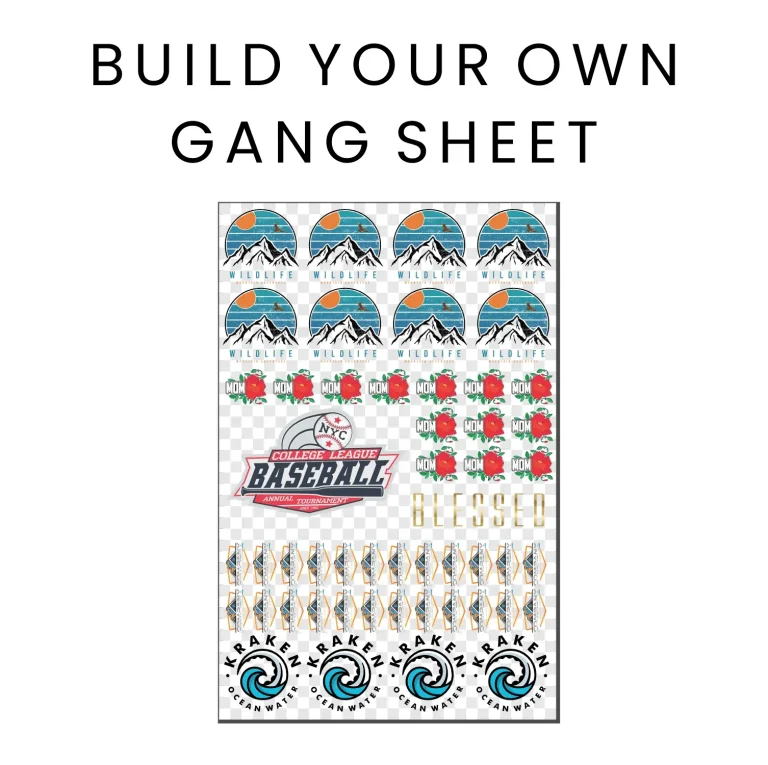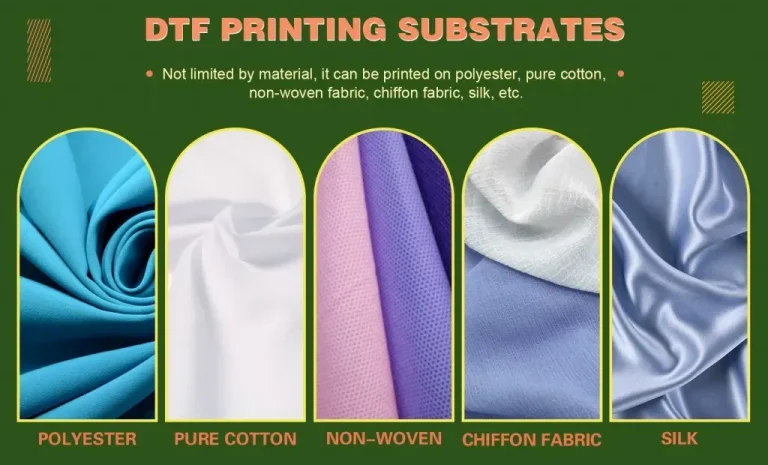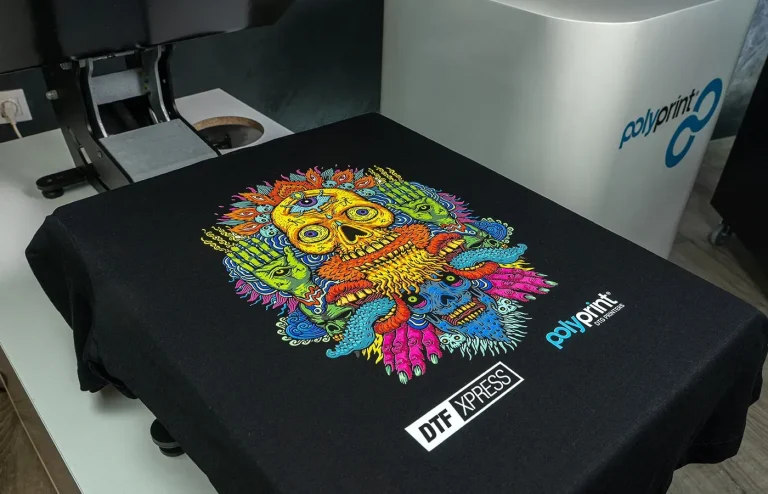DTF transfers, or Direct to Film transfers, have emerged as a game-changer in the realm of custom apparel printing, offering vibrant and durable designs on a variety of fabrics. This innovative technique is gaining traction among small business owners and DIY enthusiasts, as it allows for intricate designs that can withstand the test of time. In this guide, we will explore essential DTF printing tips, best practices, and various techniques that can enhance your printing projects. Whether you’re printing for personal use or looking to expand your product offerings, understanding DTF transfer methods can significantly elevate your results. Get ready to dive into the world of DTF transfers and unlock the potential of your creative visions with new techniques and insights!
Direct to Film (DTF) printing is quickly becoming a preferred method for applying stunning designs onto garments and fabrics. This approach, often known as film transfer printing, allows for a streamlined process that suits both hobbyists and commercial ventures alike. By utilizing special DTF film and inks, users can achieve vibrant color reproduction with excellent durability, making it a popular choice for custom apparel makers. In this article, we will discuss valuable insights into DTF transfer techniques and share best practices to help you master this captivating printing method. Join us as we uncover the intricate details of this evolving technology and provide you with practical tips for success.
Understanding DTF Transfer Printing
DTF transfer printing has transformed the landscape of custom apparel creation by providing an efficient, versatile method for applying designs to various textiles. This technique, known as Direct to Film printing, utilizes specialized inks and films to achieve vibrancy and durability in printed designs. The process begins with a digital design that is printed onto a thin film, which is then activated through heat transfer, allowing for a seamless and high-quality application that can withstand washing and wearing.
Unlike traditional screen printing, which often requires multiple steps and layers, DTF simplifies the process by combining design preparation, adhesive application, and heat transfer into a streamlined workflow. This not only saves time but also significantly reduces costs, making it a preferred choice among small businesses and DIY crafters. As DTF technology continues to advance, users can expect even higher quality outputs and more innovative applications in the realm of custom apparel.
Key Techniques for Superior DTF Transfers
To achieve the best results with DTF transfers, it is crucial to master a few foundational techniques. First and foremost is the use of high-quality DTF film, which directly influences the print’s opacity and vibrancy. The choice between clear and white films can greatly affect how designs appear on different fabric colors; therefore, understanding the application and characteristics of each type is essential for creating a striking product.
Moreover, selecting the right inks is equally important. DTF-specific inks are generally preferred due to their formulation, which promotes adhesion and longevity. Utilizing a printer that is specifically designed or modified for DTF processes can further enhance print quality. Regular maintenance of your printing equipment is also key to avoiding clogs and ensuring smooth operation, which is vital for producing clear and vibrant images.
Essential DTF Printing Tips for Beginners
For those new to DTF printing, starting with small, manageable projects can provide valuable experience while minimizing potential waste. Familiarizing yourself with the essential steps, such as accurately preparing your design and selecting the right fabrics, can lead to smoother execution. Testing the transfer on a sample fabric helps gauge how the material interacts with both the print and adhesive, helping to refine your technique before committing to larger runs.
Another important tip is to meticulously follow the manufacturer’s guidelines regarding temperature and pressure settings during the heat transfer process. Each printer and film may have specific recommendations, and adhering to these instructions ensures optimal adhesion and durability of the final design. Additionally, allowing sufficient curing time for the adhesive after application is crucial; this step significantly enhances the lifespan of the printed apparel.
The Importance of Fabric Selection in DTF Printing
The choice of fabric is a pivotal factor in the success of DTF transfers. Certain materials, such as 100% cotton or polyester blends, work exceptionally well with DTF techniques, ensuring high-quality adhesion and vibrant color reproduction. On the contrary, heavily textured or synthetic fabrics might not provide the smooth surface needed for ideal ink and adhesive application, which can lead to disappointing results.
Always scout for fabric compatibility as part of your pre-printing process. Testing different fabric samples can reveal how well a design adheres and holds up over time. By documenting which fabrics yield the best results, you can refine your offerings and ensure that your clientele receives high-quality custom apparel that meets their expectations.
Maintaining Quality After DTF Transfers
After completing a DTF transfer, proper care and maintenance of the printed fabric are essential to preserve quality. Allowing the print to cure for at least 24 hours before any washing is highly recommended, as this ensures that the adhesive fully bonds with the fabric, enhancing durability and preventing peeling or fading in the long run. Furthermore, washing instructions should always include using cool water and avoiding harsh detergents that could damage the print.
Additionally, educating customers on how to care for their DTF-printed items can improve satisfaction and extend the life of the print. Packaging items with care instructions included can further help maintain the reputation of your brand, emphasizing the commitment to quality and customer satisfaction.
Staying Ahead in the DTF Printing Industry
To thrive in the ever-evolving DTF printing industry, keeping up with the latest trends and innovations is crucial. The demand for personalized apparel is on the rise, which pushes manufacturers to continuously improve their printing technologies and offer state-of-the-art solutions to meet customer needs. Engaging with community resources such as forums and social media groups can be incredibly beneficial for learning about emerging techniques and best practices.
Moreover, networking with other DTF printing enthusiasts can yield insights into operational efficiencies and creative applications that can differentiate your business from competitors. By continually seeking knowledge and participating in industry discussions, you can enhance your skills and adapt to the dynamic landscape of custom apparel printing, ensuring sustained growth and success.
Frequently Asked Questions
What are DTF transfers and how do they work?
DTF transfers, or Direct to Film transfers, involve printing designs onto specially coated films before transferring them onto fabrics using heat. The process includes designing, printing, applying an adhesive powder, and then utilizing a heat press to bond the design to the material.
What are some essential DTF printing tips for beginners?
For beginners in DTF printing, essential tips include choosing the right DTF film for your design, using DTF-specific inks for optimal results, ensuring even application of adhesive powder, and maintaining proper temperature and pressure during heat pressing.
What fabrics are best for DTF transfers?
DTF transfers work best on cotton, cotton blends, and polyester fabrics. Avoid using DTF on heavily textured fabrics as they can hinder the smooth application of ink and adhesive, affecting the overall print quality.
What are the common DTF transfer techniques for achieving quality prints?
Common DTF transfer techniques include selecting high-quality films, utilizing compatible DTF inks, evenly applying adhesive powder, and mastering the heat pressing process with appropriate temperature and pressure settings.
How can I ensure durability in my DTF printed garments?
To ensure durability in DTF printed garments, allow prints to cure for at least 24 hours before washing, use cool water during laundry, and avoid fabric softeners. Proper care helps preserve the print and prevents fading or cracking.
What are the best practices for applying adhesive powder in DTF printing?
Best practices for applying adhesive powder in DTF printing include evenly sprinkling the powder over the wet ink and ensuring it covers the entire design area. Heat the adhesive correctly to activate it without overheating to maintain print quality.
| Key Point | Description |
|---|---|
| Overview of DTF Transfers | DTF (Direct to Film) printing allows intricate designs to be printed onto fabrics using a multi-step process involving design preparation, adhesive application, and heat transfer. |
| Key Techniques | 1. Choosing the Right Film: Select clear or white DTF films based on design needs. 2. Ink and Printer Requirements: Use DTF-specific, pigment-based inks and compatible printers. 3. Adhesive Powder Application: Evenly apply adhesive powder to wet ink before heat pressing. 4. Proper Heat Pressing: Use appropriate temperature and pressure, and follow peel technique based on film type. 5. Fabric Compatibility: Best for cotton, cotton blends, and polyester fabrics. 6. Post-Transfer Care: Allow prints to cure before washing and use cool water to maintain prints. |
| Recent Developments | 1. Industry Growth: Increased demand among small businesses for personalized products has led to technological advancements. 2. Technical Innovations: New printers designed for DTF printing are improving print quality and usability. 3. Community Resources: Online communities provide support, tips, and collaboration among DTF users. |
Summary
DTF transfers have become a game-changer in the world of fabric customization, allowing for high-quality designs that are durable and visually striking. This technique combines a unique printing process with innovative materials, specifically designed to engage the growing market of custom apparel. Understanding and implementing effective techniques—from the right choice of film and inks to precise application and care—ensures that users can achieve optimal results. Furthermore, awareness of the ongoing advancements in DTF technology and the supportive community surrounding it is essential for anyone looking to thrive in this vibrant sector. By mastering the art of DTF transfers, enthusiasts and businesses alike can unlock exceptional potential for creativity and expression in their products.







